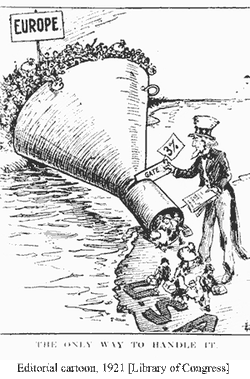Immigration

Before WWI, the US showed no interest in restricting immigration and even promoted it in some ways. Big businesses like steamship companies and railroad companies also promoted immigration and financed pro-immigration groups. The US did implement registration and literacy requirements for immigrants but did little else. However this attitude towards immigration soon changed. After WWI Americans realized that the US was fine without foreign immigration to help the economy. The US was then slowly becoming an isolationist country and wanted nothing to do with world affairs. Many arguments against immigration involved economical reasons. Labor unions stressed that immigrants would accept lower paying jobs and therefore cause wages to decrease. Americans also feared foreign radicals. Congress then responded with the Immigration Act of 1924 (Johnson-Reed Act). This act set up a quota of only 2% of the population of each nationality currently in the US to enter. For example if there were 200,000 French living in America at that certain year, then only 4,000 French immigrants would be allowed.
